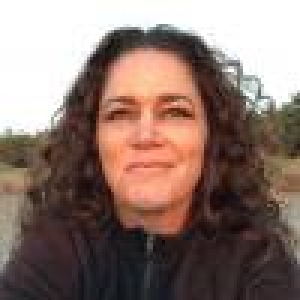
Mary Leech
()
Professor
College of Extended Learning
Bio
I am a field geologist with broad research interests in orogenic processes. I work on a variety of problems in geo/thermochronology, igneous & metamorphic petrology, structural geology and tectonics, and geochemistry that I tackle using field observations/measurements along with micro-analytical techniques and numerical modeling. My current focus is on ultrahigh-temperature granulite-facies migmatites from the Adirondack Highlands of New York. My research projects have included the collisional processes of the Himalaya and gneiss domes of southern Tibet, coexisting pseudotachylyte and eclogite-facies shear zones in northern Norway, the tectonic evolution of the ultrahigh-pressure Dabie-Sulu orogen in eastern China, and the tectonometamorphic history of subduction complexes in the Ural Mountains of Russia. I am always looking for graduate students with a strong work ethic, scientific curiosity, and drive to learn more! Send inquiries to leech@sfsu.edu – please attach a brief CV.
Websites
Mary Leech's website , Mary Leech's Google Scholar page , Mary Leech's ResearchGate page , Mary Leech's ORCID page , Mary Leech's LinkedIn page , Leech research group blog (advice for graduate students and potential graduate students)
Published peer-reviewed papers:
Adirondack Highlands & the Grenville orogen
- Metzger, E.P., Leech, M.L., *Davis, M., *Reeder, J., *Swanson, B., and Waring, H., 2021, Ultrahigh-temperature granulite-facies metamorphism and exhumation of deep crust in a migmatite dome during late- to post-orogenic collapse and extension in the central Adirondack Highlands, Geosphere.
- **Davis, M., Leech, M.L., and Metzger, E.P., 2020, Determining the petrotectonic evolution of Ledge Mountain migmatites with phase equilibria modeling and melt reintegration: Adirondack Highlands, New York, American Geophysical Union, Fall Meeting Supplement, Abstract V019-0004.
- **Davis, M., Leech, M.L., and Metzger, E.P., 2020, Determining the petrotectonic evolution of Ledge Mountain migmatites with phase equilibria modeling and melt reintegration: Adirondack Highlands, New York, Geological Society of America Abstracts with Programs, 52, 6, doi: 10.1130/abs/2020AM-358255.
- Leech, M.L., Metzger, E.M., and **Swanson, B., 2019, Evidence for ultrahigh-temperature (UHT) metamorphism in the Adirondack Highlands, Geological Society of America Annual Meeting, Abstract T23-4-11, doi: 10.1130/abs/2019AM-339742.
- Leech, M.L., *Swanson, B., and Metzger, E., 2017, Kyanite-bearing migmatites at Ledge Mountain, Adirondack Highlands, American Geophysical Union, Fall Meeting Supplement, Abstract V31B-0512.
- *Reeder, J., Metzger, E., Bickford, M.E., Leech, M.L., and Waring, H., 2016, Kyanite-bearing migmatites in the central Adirondack Mountains: Implications for late- to post-orogenic metamorphism and melting in a collisional orogen, American Geophysical Union, Fall Meeting Supplement, Abstract V23D-3009.
- *Reeder, J., Metzger, E., Bickford, M.E., and Leech, M.L., 2016, Kyanite-bearing migmatites in the central Adirondack Mountains: determining a P-T-t path and its implications on conceptual models, Geological Society of America Abstracts with Programs, Vol. 48, No. 7, Paper No. 336-12, doi: 10.1130/abs/2016AM-285430.
The graphite-diamond transition & diamond preservation in UHP rocks
- Sonin, V., Leech, M.L., Chepurov, A., Zhimulev, E., and Chepurov, A., 2018, Why are diamonds preserved in UHP metamorphic complexes? Experimental evidence for the effect of pressure on diamond graphitization, International Geology Review, doi:10.1080/00206814.2018.1435310.
- Bostick, B., Jones, R.E., Chen, C., Ernst, W.G., Leech, M.L., and Beane, R.J., 2003, Low-temperature microdiamond aggregates in the Maksyutov metamorphic complex, south Ural Mountains, Russia, American Mineralogist, 88, 1709-1717.
- Leech, M.L. and Ernst, W.G., 1998. Graphite pseudomorphs after diamond? A carbon isotope and spectroscopic study of graphite cuboids from the Maksyutov Complex, south Ural Mountains, Russia, Geochimica et Cosmochimica Acta, 62, p. 2143-2154.
The Himalaya and southern Tibetan plateau
- Leech, M.L. and Hassett, W.C.**, in revision, Comparing three gneiss domes from the western and eastern Himalaya: The Leo Pargil, Renbu, and Yalashangbo domes.
- Horton, F.** and Leech, M.L., 2013, Age and origin of granites in the Karakoram shear zone and Greater Himalaya Sequence, NW India, Lithosphere, doi:10.1130/L213.1.
- Klemperer, S.L., Kennedy, B.M., Sastry, S.R., Makovsky, Y., Harinarayana, T., and Leech, M.L., 2013, Mantle fluids in the Karakoram fault: Helium isotope evidence, Earth and Planetary Science Letters.
- Leech, M.L., Klemperer, S.L., and Mooney, W.D., 2010, Proceedings for the 25th Himalaya-Karakoram-Tibet Workshop, San Francisco, California, U.S.A., U.S. Geological Survey, Open-File Report 2010-1099, 242 p.
- Leech, M.L., 2009, Reply to comment by M.P. Searle and R.J. Phillips (2009) and R.R. Parrish (2009) on: "Does the Karakoram fault interrupt mid-crustal channel flow in the western Himalaya?", Earth and Planetary Science Letters (2009), doi:10.1016/j.epsl.2009.05.039. This pdf also includes the two comments.
- Leech, M.L., 2008, Does the Karakoram fault interrupt mid-crustal channel flow in the western Himalaya?, Earth and Planetary Sciences, 276, 314-322.
- Leech, M.L., Singh, S., and Jain, A.K., 2008, Continuous metamorphic zircon growth and interpretation of U-Pb SHRIMP dating: An example from the western Himalaya: In, "Metamorphic conditions along convergent plate junctions: Mineralogy, petrology, geochemistry, and tectonics" (W.G. Ernst and D. Rumble III, eds.), Geological Society of America International Book Series, 10, 433-448.
- Leech, M.L., Singh, S., Jain, A.K., 2007, Continuous metamorphic zircon growth and interpretation of U-Pb SHRIMP dating: An example from the western Himalaya, International Geology Review, 49, 313-328.
- Leech, M.L., Singh, S., Jain, A.K., and Klemperer, S.L., and Manickavasagam, R.M., 2006, Reply to comment by P.J. O'Brien on: "The onset of India-Asia continental collision: Early, steep subduction required by the timing of UHP metamorphism in the western Himalaya" by Mary L. Leech, S. Singh, A.K. Jain, Simon L. Klemperer and R.M. Manickavasagam, Earth and Planetary Science Letters 234 (2005) 83-97, Earth and Planetary Science Letters, 245, 817-820.
- Leech, M.L., Singh, S., Jain, A.K., and Klemperer, S.L., and Manickavasagam, R.M., 2005, The onset of India-Asia continental collision: Early, steep subduction required by the timing of UHP metamorphism in the western Himalaya, Earth and Planetary Science Letters, 234, 83-97.
The Dabie-Sulu orogen in Eastern China
- Leech, M.L. and Webb, L.E., 2013, Is the HP-UHP Dabie-Sulu orogen a piercing point for offset on the Tan-Lu fault?, Journal of Asian Earth Sciences, 63, 112-129.
- Yang, T.N., Peng, Y., Leech, M.L., and Lin, H.Y., 2011, Fold patterns indicating Triassic constrictional deformation on the Liaodong peninsula, eastern China, and tectonic implications, Journal of Asian Earth Sciences, 40,72-83, doi:10.1016/j.jseaes.2010.08.017.
- Leech, M.L., Webb, L.E., and Yang, T., 2006, Diachronous histories for the Dabie-Sulu orogen from high-temperature geochronology, Geological Society of America Special Paper 403, 1-22.
- Webb, L.E., Leech, M.L., and Yang, T., 2006, 40Ar/39Ar thermochronology of the Sulu terrane: Late Triassic exhumation of high and ultrahigh-pressure rocks and other implications for Mesozoic tectonics in East Asia, Geological Society of America Special Paper 403, 77-92.
- Yang, T., Xu, Z., and Leech, M.L., 2004, Mass balance during retrogression of eclogite-facies minerals in the Rongcheng eclogite, eastern Sulu UHPM terrane, China, American Mineralogist, 89, 1525-1532.
The Ural Mountains, Russia
- Fedkin, V.V., Burlick, T.D.*, Leech, M.L., Shchipansky, A.A., Valizer, P.M., , and Ernst, W.G., 2021, Petrotectonic origin of mafic eclogites from the Maksyutov subduction complex, south Ural Mountains, Russia, Geological Society of America, Special Paper in Honor of Eldridge M. Moores (edited by J. Wakabayashi, Y. Dilek, and Ogawa).
- Fedkin, V.V., Leech, M.L., Shchipansky, A.A., Valizer, P.M., Burlick, T.D.*, and Ernst, W.G., 2017, Coexisting zoned garnets and clinopyroxenes from mafic eclogites of the Maksyutov Complex, south Ural Mountains, Russia, Experiment in Geosciences, 23, 1-10.
- Beane, R.J. and Leech, M.L., 2007, The Maksyutov Complex: The first UHP terrane 40 years later, in Cloos, M., Carlson, W.D., Gilbert, M.C., Liou, J.G., and Sorensen, S.S., eds., Convergent Margin Terranes and Associated Regions: A Tribute to W.G. Ernst: Geological Society of America Special Paper 419, p.153-169, doi: 10.1130/2006.2419(08).
- Leech, M.L. and Willingshofer, E., 2004, Thermal modeling of an ultrahigh-pressure complex in the south Urals, Earth and Planetary Science Letters, 226, 85-99.
- Bostick, B., Jones, R.E., Chen, C., Ernst, W.G., Leech, M.L., and Beane, R.J., 2003, Low-temperature microdiamond aggregates in the Maksyutov metamorphic complex, south Ural Mountains, Russia, American Mineralogist, 88, 1709-1717.
- Leech, M.L., 2001, Arrested orogenic development: eclogitization, delamination, and tectonic collapse, Earth and Planetary Science Letters, 185, p. 149-159.
- Leech, M.L. and Ernst, W. G., 2000, Petrotectonic evolution of the high- to ultrahigh-pressure Maksyutov Complex, Karayanova area, south Ural Mountains: Structural and oxygen isotope constraints, Lithos, 52, p. 235-252.
- Leech, M.L. and Stockli, D.F., 2000, The late exhumation history of the ultrahigh-pressure Maksyutov Complex, south Ural Mountains, from new apatite fission track data, Tectonics, 19, p. 153-167.
- Leech, M.L., 1999, Petrotectonic evolution of the Maksyutov Complex, south Ural Mountains, Russia, Ph.D. dissertation, Stanford University, 117 p.
- Ernst, W.G., Mosenfelder, J.L., Leech, M.L., and Liu, J., 1998, H2O recycling during continental collision: phase-equilibrium and kinetic considerations. In When Continents Collide, eds., B.R. Hacker and J.G. Liou, Kluwer Academic, Netherlands, 275-295.
- Leech, M.L. and Ernst, W.G., 1998. Graphite pseudomorphs after diamond? A carbon isotope and spectroscopic study of graphite cuboids from the Maksyutov Complex, south Ural Mountains, Russia. Geochimica et Cosmochimica Acta, 62, p. 2143-2154.
- Beane R.J., Liou J.G., Coleman R.G., and Leech M.L., 1995, Petrology and retrograde P-T path for eclogites of the Maksyutov Complex, southern Ural Mountains, Russia, Island Arc, 4, p. 254-266.
- Lennykh V.I., Valizer P.M., Beane R.J., Leech M.L., and Ernst W.G, 1995. Petrotectonic evolution of the Maksyutov Complex, south Urals, Russia: Implications for ultrahigh-pressure metamorphism, International Geology Review, 37, p. 584-600.
Eclogitization & the role of fluids in brittle-ductile processes, Norway
- Leech, M.L. and Shulman, D.J., in revision, Fluid-controlled metamorphism of eclogitic pseudotachylite-bearing shear zones, Flakstadøy, northern Norway.
- Leech, M.L. and **Shulman, D.J., 2014, Fluid-controlled eclogitization of pseudotachylyte-bearing shear zones, Flakstadøy, Norway, Goldschmidt conference abstract, 22f-302.
- Leech, M.L. and **Shulman, D.J., 2012, Fluid-controlled metamorphism of eclogitic pseudotachylite-bearing shear zones, Flakstadøy, northern Norway, Eos Trans., Am. Geophys. Union, Fall Meeting Supplement, Abstract MR51A-03.
- *Dutra, S.M., **Shulman, D.J., and Leech, M.L., 2010, Thermobarometry of eclogites-facies shear zones in the Lofoten Islands, Norway, Geol. Soc. Am. Abstr. Prog., 42, p. 100.
- Leech, M.L., **Shulman, D., and *Dutra, S., 2009, Pseudotachylite in eclogite-facies shear zones from the Lofoten Islands, northern Norway, Eos Trans., Am. Geophys. Union, Fall Meeting Supplement, Abstract V43C-2265.
- **Shulman, D., Leech, M.L., and *Dutra, S., 2009, Eclogite-facies pseudotachylite in deep crustal rocks exposed in northern Norway, Geol. Soc. Am. Abstr. Prog., 41, p. 485.
- *Polito, C. and Leech, M.L., 2006, Petrology and new U-Pb SHRIMP dating for eclogues of the Lofoten Islands, Flakstadøy and Vestvagøy, northern Norway, Eos Transactions AGU, 87, Fall Meeting Supplement, Abstract V31A-0571.
Cordilleran gneiss domes
- **Liu, R. and Leech, M.L., 2016, Regional tectonic evolution of the Pioneer metamorphic complex, south-central Idaho, Am. Geophys. Union, Fall Meeting Supplement, Abstract #T51F-2994.
Other publications - Education-related
- Leech, M.L., Howell, D.G., and Egger, A.E., 2004, A guided inquiry approach to learning the geology of the U.S., Journal of Geoscience Education, 52, 368-373.
(**graduate student and *undergraduate student co-authors)
Research
My current research projects include ca. 1 Ga ultrahigh-temperature metamorphism and migmatization in the Adirondack Highlands, New York; ca. 53 Ma ultrahigh-pressure subduction zone metamorphism in the India-Asia collision zone, and Miocene granite intrusion and mid-crustal channel flow processes in kyanite-bearing Greater Himalaya Sequence rocks, India; and the interplay between britle and ductile deformational processes in pseudotachylyte-bearing eclogite-facies shear zones in the Lofoten Islands, Norway.
External grants
- U.S. Geological Survey EDMAP program (2020-2021) part of the National Cooperative Geologic Mapping Program, “Geologic mapping of the Ledge Mountain migmatites, Rock Lake 7.5’ quadrangle, Adirondack Highlands, New York” (extended 1 year because of Covid-19 restrictions on research/travel), PI
- NSF Tectonics program (2013-2014) EAR 1406054, “Microstructural Analysis and EBSD Applications in Earth Sciences” (workshop using David Mainprice's MTEX/MATLAB), PI
- NSF Instrumentation & Facilities (2010-2013) EAR 0949176, Upgrade of Electron Microscopy Facility to Increase Geoscience Functionality at San Francisco State University, PI
- NSF Continental Dynamics (2010-2011) EAR 0965796, “Conference Support for the 25th International Himalaya-Karakoram-Tibet (HKT) Workshop” and “Future directions for NSF-sponsored geoscience research in the Himalaya/Tibet”, PI
- NSF CAREER — Tectonics, Petrology & Geochemistry, and Education and Human Resources (2009-2014) EAR 0847721, Petrogenetic affinity of Miocene granites to test the mid-crustal channel flow model in the Himalaya (two no-cost extensions to 2016), PI
- NSF Major Research Instrumentation (2008-2011) CHE 0821619, Acquisition of a FE-SEM to enhance research and student training in Biology, Chemistry, Geosciences, Physics, and Engineering at San Francisco State University, Co-PI
- NSF-AAAS Women's International Science Collaboration grant (2003-2004) Collaborative research on the petrotectonic evolution of the ultrahigh-pressure Tso Morari Crystallines, western Himalaya, India, PI
- NSF Continental Dynamics (2001-2005) EAR 0003355, Subduction and exhumation of ultrahigh-pressure rocks: Field and drilling studies in eastern China, ~20% of proposal effort
- University of California President's Postdoctoral Fellowship Program (2001-2003) The impact of eclogite formation on the dynamics of continental collision
-
NSF Office of International Science and Engineering (1999-2001) OISE 9901573, Mountain building in the Urals and the nature of ultrahigh-pressure metamorphism, PI
Current students
Graduate students
- Laura Horsley (M.S. exp. 5/2022) U-Pb SHRIMP dating and zircon geochemistry of Ledge Mountain migmatites, Adirondack Highlands, New York
- Zachary Smirnov (M.S. exp. 5/2023) Thermodynamic modeling of ultrahigh-temperature granulites in the Ledge Mountain region, Adirondack Highlands, New York
Undergraduate students
- Victoria "Tori" Hicks (B.S. exp. 2023)
- Kaitlyn "Kei" Mowry (B.S. exp. 2023)
Former students
Graduate students
- Mike Davis (M.S. exp. 5/2021) Petrotectonic evolution of Ledge Mountain migmatites with phase equilibria modeling and melt reintegration, Adirondack Highlands, New York (Now a Research Assistant at the U.S. Geological Survey, Menlo Park)
- Brandon Swanson (M.S. 2018) Pressure-temprature conditions of Kyanite-bearing Migmatites at Ledge Mountain, Central Adirondack Highlands (Now a Hydrologist at Nevada Gold Mines, Elko, NV)
- Katherine "Katie" Sullivan (M.S. 2017) Correlation of erupted plutonic clasts and volcanic deposits from Newberry volcano, Oregon (Now a contractor for the US Geological Survey, Menlo Park, CA)
- Jackson Reeder (M.S. 2017) U-Th-Pb geochronology and trace element chemistry of zircon from Ledge Mountain, central Adirondack Highlands, New York (Now a Geologist at Amec Foster Wheeler, Oakland, CA)
- Rui Liu (M.S. 2016) Regional tectonic evolution of the Pioneer core complex, south-central Idaho (Now a Geologist at StructureSolver LLC, Houston, Texas)
- Andy Nieblas (M.S. 2016) Pressure-temperature-time-deformation history of the Lahul valley, NW Indian Himalaya (Now a Senior Staff Geologist at LGC Geotechnical, Inc., San Clemente, CA)
- Ozum Basta (M.S. 2015) The tectonometamorphic evolution of the Greater Himalayan Sequence along the Zanskar shear zone, NW Himalaya (Now a Reservoir Geologist at Turkish Petroleum, Ankara, Turkey)
- Emma Beck (M.S. 2014) P-T-t-d history of mylonites from the Zanskar shear zone, NW India (Now an MBA Candidate at Harvard Business School)
- Forrest Horton (M.S. 2011) Geochronology and zircon geochemistry of Greater Himalaya leucogranites in Zanskar, NW India (Completed his PhD in Geological Sciences at UC Santa Barbara in 2015. Now an Assistant Scientist at Woods Hole Oceanographic Institution)
- Pariskeh Hosseini (M.S. 2011) EBSD analysis of partially-eclogitized rocks from the Marun-Keu Complex, Polar Urals, Russia (Now a PhD candidate at Queens College, City University of New York)
- Deborah Shulman (M.S. 2011) Fluid controlled metamorphism of eclogitic pseudotachylite-bearing shear zones, Flakstadøy, northern Norway (Completed a PhD in Geology in 2016 at the University of Maine. Now an Event Coordinator, University of Maine)
- Will Hassett (M.S. 2010) Geochemical signature of Himalayan gneiss domes: Implications for channel flow (Now a teacher with Teach for America)
Undergraduate Research Theses or Senior Projects
- Jennifer Luscombe (B.S. 2015) P-T-t evolution of the UHP Tso Morari Complex, Indian Himalaya (Completed an MS in Geoscience at San Diego State University. Now a Professional Geologist and a Senior Staff Geologist at Geosyntec Consultants, San Diego, CA)
- Ted Burlick (B.S. 2013) Metamorphism of eclogites from the UHP Maksyutov Complex, south Ural Mountains, Russia (Completed an MSc in Geodynamics in 2019 at the Istanbul Technical Universtiy, Turkey)
- Kelsey Kehoe (B.S. 2012) Phase equilibria and thermobarometry of metabolites from Himalayan gneiss domes (Now a Project Geologist at the Wyoming State Geological Survey, Laramie, WY)
- Carla Rosa (B.S. 2011) Textural analysis of rocks from the Karakoram shear zone, Ladakh, northwestern Indian Himalaya (Now a Professional Geologist and an Engineering Geologist with the California Geological Survey)
- Kevin Denton (B.S. 2010) Paleomagnetic study of the Caetano intra-caldera tuff, Lander County, Nevada (Co-advised with Jonathan Glen. Now a Geophysicist at the US Geological Survey, Menlo Park, CA)
- Steve Dutra (B.S. 2010) Thermobarometry and mineral chemistry of clinopyroxenes in eclogite-facies shear zones in the Lofoten Islands, Norway (Received an MS in Resource Economics and Policy at the University of Maine in 2014. Now the Electric Division Manager at Silicon Valley Power, Bangor, Maine)
- Mae Marcaida (B.S. 2010) Crystallization history of Black Point and Red Cones: Mafic eruptions of the Mono-Inyo volcanic chain, eastern California (Co-advised with Margaret Mangan, U.S.G.S. Menlo Park; Now a PhD Candidate in Geological Sciences at Stanford University)
- Molly Cornell (B.S. 2009) Characterization of anomalous graphite from the Maksyutov ultrahigh-pressure metamorphic complex, Russia (Now a freelance photo stylist, Petaluma, CA)
- Christina Halter-Polito (B.S. 2006) Eclogitization of Proterozoic gabbros in the Lofoten Islands, Norway (Now at Lab Technician at the Berkeley Geochronology Center, Berkeley, CA)
Lab facilities
Research facilities in the Department of Earth & Climate Sciences include:
• Mineral separation/sample preparation lab - Rock saws, thin sectioning equipment, grinder/polisher, vibratory polisher, jaw crusher, disk mill, shatterbox, slope Frantz magnetic separator, ovens, lap wheels, sieves and sieve shakers, rock storage
• Twenty Leica DM750P petrographic microscopes available for student use, and one trinocular Leica DM750P scope with a dedicated 18 megapixel DSLR camera with HD video recording (Canon EOS Rebel T3i) for taking photomicrographs or videos of thin sections.
• Leech’s personal lab has a Nikon E600POL polarizing microscope and a Nikon SMZ1500 reflected and transmitted light microscope with a polarizing, rotatable stage and base capable of pseudo-darkfield imaging. These two microscopes share a DSLR camera (a Canon EOS Rebel T3i) that can be used interchangeably between the two scopes. The Leech lab also houses a custom Xidax X-8 and an Alienware Aurora R12 "gaming" PC for thermodynamic modeling of complex rocks using Perple_X; these PCs are set up with convenient remote access capability.
Research centers and facilities in the College of Science & Engineering:
• Zeiss Ultra 55 Field emission scanning electron microscope with BSE, STEM detector, Oxford INCA EDS and EBSD, and a Gatan MiniCL. We use the SEM in conjunction with an XEI Evactron plasma cleaner and ibss Gentle Asher to maintain a clean sample chamber. Sample preparation equipment includes a Gatan Model 682 PECS + RIBE that is a coater/ion beam etcher, a Cressington 208HR sputter coater, a Cressington 208C carbon coater equipped with sample holders specifically for geological thin sections, and a critical point dryer. We use Channel5 software to process EBSD data.
• Bruker D8 ADVANCE powder x-ray diffractometer
• Raman spectrometer with a 532 nm laser and 50 mW power (in the Department of Physics & Astronomy), and a Horbia Raman system with two laser lines (532 and 788 nm) and a TERS microscope (in the School of Engineering).
• Various spectrometers, gas and liquid chromatographs, radiochemistry facilities and equipment, centrifuges, lasers, etc. (in the Department of Chemistry and Biochemistry)
• Scanning laser confocal microscope, fluorescence and epi-fluorescence microscopes, and a dissecting scope (in the Cell and Molecular Imaging Center, Department of Biology)
• The Atomic Force Microscopy Facility
• Gas chromatograph stable isotope analyzer, elemental analyzer, etc. (at the Romberg Tiburon Center for Environmental Studies)
• Glass shop and an electronics repair facility
• The Sierra Nevada Field Campus
Other facilities (in the Bay Area and at other U.S. institutions):
• We also regularly use lab facilities at other universities including collecting mineral composition data on the electron microprobe in the Microchemical Analysis Facility and performing U-Pb zircon geochronology & trace element geochemistry on the Stanford-USGS SHRIMP-RG lab at Stanford University.
• We send samples to the Peter Hooper GeoAnalytical Lab at Washington State University for whole-rock major and trace element geochemical analyses.
• We have an established relationship with the Noble Gas Lab at the University of Vermont for 40Ar/39Ar geochronology and thermochronology.
• We have collected combined U-Th-Pb geochronologic data and Hf isotope ratios by Laser Ablation ICP Mass Spectrometry (ICP-MS) at the University of Arizona's LaserChron Center.
Teaching
Currently offered courses*
- Our Dynamic Earth (ERTH 112 – GE & required majors course)
- Techniques in Earth Sciences (ERTH 205 – required majors course, Fall only)
- Volcanology (ERTH 410 – major elective)
- Mineralogy and Petrology I (ERTH 420 – required major course, Spring only)
- Mineralogy and Petrology II (ERTH 520/820 – major elective, Fall only)
- Global Tectonics (ERTH 795 – graduate-level)
Offered in the past*
- Physical Geology (ERTH 210 – GE & required majors course)
- Earthquakes and the San Andreas fault (ERTH 272 – GE course)
- The Violent Earth (ERTH 310 – GE course)
- Geology of the National Parks (ERTH 360)
- Geochemistry (ERTH 522 – majors course)
- Science Partners in K-12 Education (ERTH 652 – major elective)
- Tectonic Geomorphology (ERTH 795 – graduate-level)
- California Rocks! (Stanford Continuing Studies course)
* Course web sites are hosted on a course management system called iLearn; external users can contact me via e-mail (leech 'at' sfsu.edu) for access to course materials on iLearn
Classroom exercises
- Geologic provinces of the U.S. (with David Howell, retired from the U.S. Geological Survey, Menlo Park)
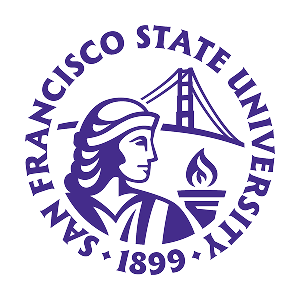
Larry Raphael Salomon
()
Instructional Faculty, Special Programs
Ethnic Studies Program, College of Ethnic Studies
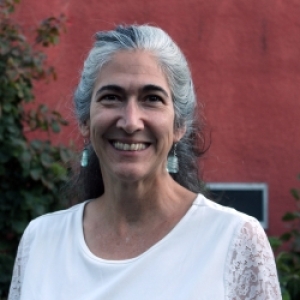
Carmen R Domingo
(
She/Her/Hers
)
Dean of the College of Science and Engineering, Professor
BiologyCollege of Science and Engineering
Bio:
Education
University of California, Irvine B.S. 1987 Biological Sciences
University of California, Berkeley Ph.D 1995 Molecular & Cell Biology
University of California, Berkeley Fellow 1997 Integrative Biology
Positions and Employment
1995-1997 Research Fellow (with Dr. T. Hayes), Integrative Biology, University of California, Berkeley.
1997-2003 Assistant Professor, Department of Biology, San Francisco State University, CA.
2003-2008 Associate Professor, Department of Biology, San Francisco State University.
2007-Present Associate Chair, Department of Biology, San Francisco State University.
2008-Present Professor, Department of Biology, San Francisco State University.
Other Professional Experience
2007 Panelist, Division of Integrative Organismal Systems, NSF Animal Developmental Biology
2009 Panelist, Developmental Biology NIH R15 (AREA)
1999-Present Workshop Instructor, RISE, MARC, and SEPA student training programs, SFSU
2000-Present Ad hoc Reviewer, Developmental Biology; Developmental Dynamics; Acta Anatomica
2009-Present Director, NSF Research Experiences for Undergraduates, SFSU
2009-Present Director, Calif. Institute for Regenerative Medicine Bridges to Stem Cell Research, SFSU
2010-2014 Panelist, NIH National Institute of General Medical Sciences MPRC-B/TWD-D panel
2014-2018 Panelist, NIH Child Health & Human Development , Developmental Biology Subcommittee
2011-2014 Member, NSF Directorate for Biological Sciences Leadership Council
Teaching
BIOL 230 Introductory Biology I
BIOL 351 Exp. in Cell & Molecular Biology
BIOL 380 Comparative Embryology
BIOL 382/782 Developmental Biology
BIOL 699 Special Study in Biology
BIOL 861 Topics in Dev. Biol.: Myogenesis
BIOL 861 Topics in Dev. Biol.: Organogenesis
BIOL 861 Stem Cell Biology
BIOL 871 Colloquium in Micro, Cell & Mol Biol
BIOL 895 Final Report
BIOL 898 Thesis
Research
The long-term goal of my lab, which is composed of undergraduate and master-level students, is to understand the cellular and molecular mechanisms that drive morphogenetic processes in the vertebrate embryo. Recently my lab has made significant progress in identifying the complex cellular movements that lead to the formation of somites and the elongation and alignment of muscle fibers in the model system, Xenopus laevis. Given that the somites establish the basic segmented body plan of the vertebrate adult, understanding the cellular and molecular underpinnings of this process is of great importance. Given the recent discovery of muscle-specific microRNAs involved in muscle formation and maintenance, we have recently been investigating the role of three muscle-specific microRNAs, miR-1, miR-133, and miR-206, in the regulation of somite and muscle morphogenesis.
Websites:
Domingo Lab, Stem Cell Graduate Training Program, NSF REU Summer Program
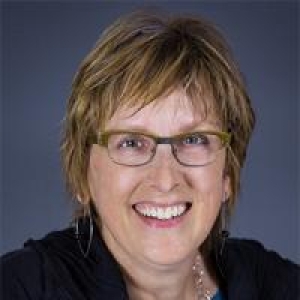
Constance B Ulasewicz
()
Emeritus Faculty/Lecturer
Consumer and Family Studies, College of Health and Social Sciences

Sergei Ovchinnikov
()
Emeritus Faculty
Bio:
Sergei Ovchinnikov is a Professor Emeritus of Mathematics at San Francisco State University. He received his Ph.D. in Mathematics from Moscow University in 1971. After having held various research and teaching positions in the former Soviet Union, Sergei emigrated to the United States in 1980. He was a Research Associate at the Computer Science Department, UC Berkeley, from June 1980 until September 1981 when he joined the Mathematics Department of SFSU.
Professional History (SFSU):
2017–date: Professor Emeritus of Mathematics
1985–2017: Professor of Mathematics
1983–1985: Associate Professor of Mathematics
1981–1983: Lecturer, Mathematics Department
Representative Professional Experience:
Over 45 years teaching mathematics on all levels from secondary school to graduate courses. Supervised a doctoral dissertation. Carried out research in the areas of functional analysis, group representation theory, ordered sets, mathematical social sciences, fuzzy logic, and decision analysis.
Education:
1971: Ph.D. in Mathematics, Moscow University, USSR.
1969: M.S. in Mathematics, Moscow University, USSR.
Affiliations:
American Mathematical Society (AMS)
North America Fuzzy Information Processing Society (NAFIPS)
Presentations:
Presented research papers and invited talks at more than 100 international and domestic conferences.
Publications:
Over 120 publications in English, Spanish, and Russian.
Recent Publications:
- Real Analysis: Foundations, Springer, 2021. Book’s Springer Page
- Functional Analysis. An Introductory Course, Springer, 2018. Book’s Springer Page
- Number Systems. An Introduction to Algebra and Analysis, American Mathematical Society, 2015. Book’s AMS Page
- Measure, Integral, Derivative. A Course on Lebesgue’s Theory, Springer, 2013. Book’s Springer Page
- Graphs and Cubes, Springer, 2011. Book’s Springer Page

C Sarah Soh Boucher
()
Professor
AnthropologyCollege of Liberal and Creative Arts
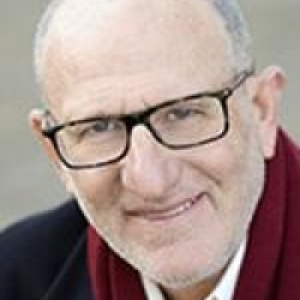
Bruce Heiman
()
Instructor, Special programs
International Business, College of Business
Bio:
Background. Professor Heiman’s education includes an A.B. in Psychology from Stanford (1981); an M.S. from Stanford in Mechanical Engineering, Product Design (1983); an M.B.A. from Universiteit Nijenrode, NL (1990); and a PhD from UC Berkeley Haas School of Business (Business and Public Policy, 2002). He has published in a substantial number of academic journals and conference proceedings as well as refereed books. He has served for five years as Chair of the College of Business Graduate Curriculum Committee, Board Chair, SF State Bokstore, and President of the SF State Friends of the JPL Library, a non-profit that supports the Library at SFSU. He routinely counsels and nurtures a number of SF Bay Area entrepreneurs.
Research. Broadly, Prof. Heiman explores international aspects of creativity and innovation in his research. Within this realm, his interests include design thinking in firms, transaction cost economics, and its application to international aspects of problem finding and solving in organizations. He works under the iportant, emergent umbrella of "Microfoundations" theory.
Teaching. He has worked previously as a faculty member at Universiteit Maastricht, NL, Faculty of Economics, USF Masagung School of Management, Stanford Center for Professional Development, and UC Berkeley (Visiting Assoc. Prof.) Prof. Heiman has over 20 years experience working full time in firms, or consulting in strategic management, with an emphasis on innovation processes. He has extensive experience teaching MBA, Undergraduate, Executive MBA, and Executive Certificate Program students. Classes taught include Innovation and Entrepreneurship (UCB), Doing Business in Europe, Global Strategic Management, Creativity Skills for Global Managers, International Business Environment Analysis (SFSU), Statistics and Math for MBA Students (USF), and Cross-Cultural Creativity (SFSU). Prof. Heiman also teaches IBUS 130: Globalization and Business in the 21st Century, a large online undergraduate course. He has extensive experience designing and implementing hybrid and fully online courses. He speaks English (native), Dutch (advanced) and French (elementary).
CV

Pamela Hood
()
Associate Professor
Philosophy, College of Liberal and Creative Arts

Leticia Marquez Magana
()
Professor
Biology, College of Science and Engineering
Bio:
Leticia Márquez-Magaña, PhD is Professor of Biology and the Director of the Health Equity Research (HER) Laboratory at San Francisco State University. She is the first-born daughter of Mexican immigrants and began her education in the U.S. as a monolingual Spanish speaker. Professor Márquez-Magaña attended Stanford University as the first member of her extended U.S. family to complete high school. She earned a co-terminal BS/MS degree in Biological Sciences at Stanford, and went on to earn a PhD in Biochemistry at UC Berkeley. She joined the faculty at SF State in 1994 targeting her professional efforts to “giving back.” Currently these efforts are primarily dedicted to achieving the overall mission of the HER lab to "Link Basic Science to Community Health." Towards this end projects in the lab are aimed at using biomedical tools to study how social injustice gets under the skin to cause or worsen disease. This information can then contribute to advocacy efforts to change policies and practices for health equity.
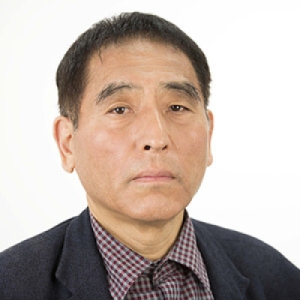
Hideo Muranaka
()
Foreign Languages & Lit, College of Liberal and Creative Arts